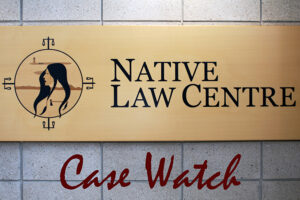In an appeal regarding an interim injunction that stayed the implementation of amendments made to the Child Youth and Family Enhancement Act that prevented an Indigenous woman to access financial support to help her transition from government care into adulthood. The appellate court found that the chambers judge failed to consider a number of important factors and failed to give adequate weight to the public interest in weighing the balance of convenience. As a result, the appellate court allowed for the appeal and has set aside the injunction.
There are two applicants within this case – A.C. and J.F., however the applicant J.F. did not file any evidence, and therefore the application was only advanced by the respondent A.C.. A.C. is a 22 year old Indigenous woman whose traumatic childhood resulted in her being in government care since the age of 12. When she turned 18, she became eligible to participate in Alberta’s Support Financial Assistance program [“SFA”], which provided her with transitional social and financial support that, under prescribed circumstances, and could continue until the age of 24. The purpose of the program was to facilitate the transition from childhood to adulthood for children in long term care who, as a result of those circumstances, lack the emotional and financial support to smooth the transition. In 2019, Alberta announced an amendment to the SFA program, reducing the maximum age for SFA assistance from 24 to 22.
A.C. argues that the effect of this sudden and unexpected withdrawal of social and financial support had an incredibly negative effect on her. She challenged the constitutionality of the legislative amendment and the manner which it was carried out, asserting that it breached her section 7 right to life, liberty and security of the person, and her section 12 right to be free from cruel and unusual treatment. She sought out and obtained an interlocutory injunction, which would stay the implementation of the proposed changes pending the full hearing of her Charter challenge. This case deals with Alberta’s appeal of this injunction.
At issue in this appeal is whether or not the respondent met the test for an interlocutory injunction restraining the implementation of this legislation. The decision to grant an interlocutory injunction is a discretionary exercise, with which a tri-parte test should be applied (RJR-MacDonald Inc v Canada (Attorney General), 1994 1 SCR 311). The first step to consider in the test for an interlocutory injunction is whether the applicant has identified a serious question to be tried. The chambers judge found serious questions justifying the interlocutory injunction on three heads: a) infringement of A.C.’s right to security of the person contrary to s. 7 of the Charter; b) cruel or unusual treatment of A.C. contrary to s.12 of the Charter; and c) breach of a fiduciary duty owed by the government to A.C. as a recipient of public support. The appellate court found that the chambers judge erred in identifying the right or freedom in each of these instances and in finding an arguable case that the state action caused or constituted a breach of the right or freedom in question. As a result, the appellate court concluded that the first part of this test was not met.
Since the respondent was unable to meet the first part of the test, it is not strictly necessary to consider the following steps of the analysis which pertain to irreparable harm and the balance of convivence. However, the appellate court considered these steps regardless. With regard to finding irreparable harm, the Court concluded that it was not clear that the respondent proved any potential harm arising from the amendment, much less irreparable harm. With regard to the balance of convenience, the appellate court found that it weighed in favor of dismissing the application for an interlocutory injunction on the basis that the amendment to the legislation was enacted in the public interest. The appellate court concluded their decision by allowing the appeal and determining that interlocutory relief should not have been granted.




